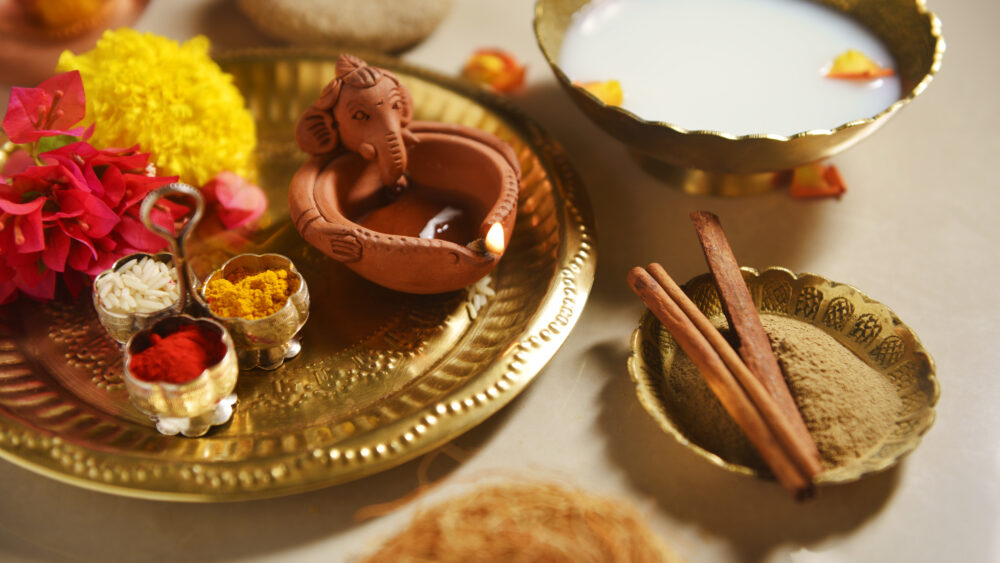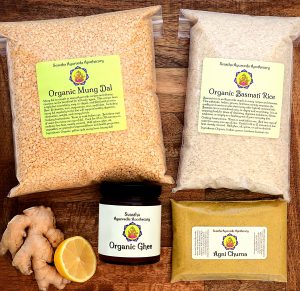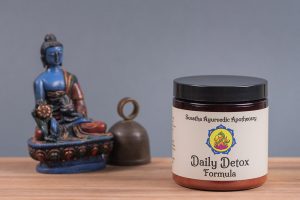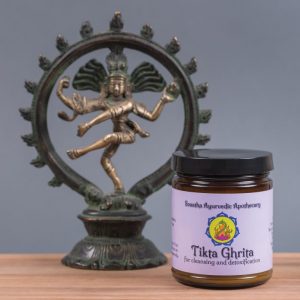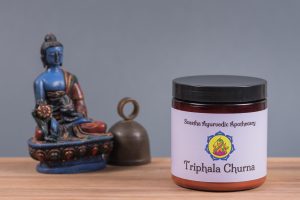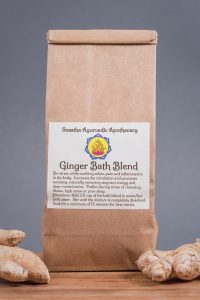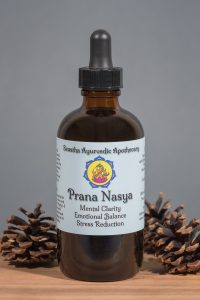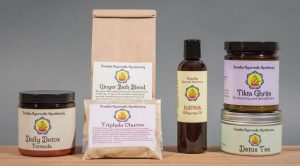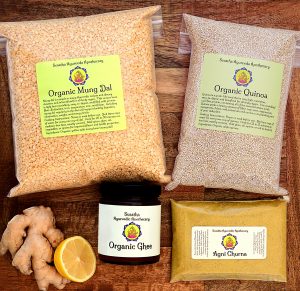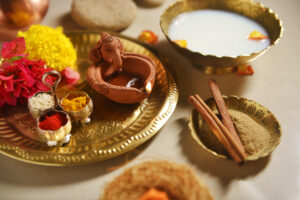 With thousands of years of trial and error, Ayurveda is undoubtedly a leader in cleansing therapies. A few factors that I appreciate with Ayurvedic cleanses are the fact that you can eat food (long-term fasting is generally not recommended), they can be modified to fit your personal needs, they focus on eliminating deep-rooted toxins from the body AND mind, and their end goals include restoring balance and kindling Agni (digestion).
With thousands of years of trial and error, Ayurveda is undoubtedly a leader in cleansing therapies. A few factors that I appreciate with Ayurvedic cleanses are the fact that you can eat food (long-term fasting is generally not recommended), they can be modified to fit your personal needs, they focus on eliminating deep-rooted toxins from the body AND mind, and their end goals include restoring balance and kindling Agni (digestion).
But as with any therapy, it is essential to perform an Ayurvedic cleanse properly to see proper results. It is equally important to make sure the cleanse you are performing is suitable for your current needs, strength level, and body type. Without these factors, your results may be lacking, or worse yet, you may end up causing more harm than good.
Here are some examples of when you should NOT perform a cleanse:
Contraindications For Cleansing
- During pregnancy
- While breastfeeding
- During menstruation
- While traveling or directly before travel
- While working a lot (ideally you should take off for the entire cleanse and at least one week post-cleanse)
- During sickness
- Directly after severe sickness (wait until total health and strength return)
- Before or after surgery (wait at least 30 days or until total health and strength return—always check with your doctor)
- Before, during, or directly after chemotherapy (wait at least 60 to 90 days or until total health and strength return—always check with your doctor)
- While on antibiotics
- During times of severe mental-emotional imbalance
- While grieving the loss of a loved one
- While going through severely stressful events (divorce, moving, etc)
If you find you are in a good space for cleansing, there are many Ayurvedic practices to help you enhance your cleanse, and in turn, enhance your results. These suggestions generally go best with a Kitchari Cleanse (or a similar mono-diet cleanse) but may be beneficial for a variety of other cleansing programs as well. And like most healthcare practices, the more you put in (without overdoing it of course!), and the more consistent you are, the more healing it will be.
NOTE: Some of these suggestions include dosha-specific recommendations. Take our Discover Your Dosha Quiz to find out your main dosha type.
14 Ways To Enhance Your Cleanse With Ayurveda
1. Eat A Mono-Kitchari Diet Throughout Your Cleanse
What does a mono-kitchari diet mean? This means that the only food you should consume is kitchari for your entire cleanse. Kitchari is generally made from basmati rice and mung dal cooked together, but these ingredients can be modified for specific dietary restrictions and needs. For more strict cleanses, vegetables should not be added to the kitchari, but some individuals may prefer to use a cleansing kitchari recipe that allows lighter vegetable varieties.
Try our Cleansing Kitchari Recipe (with veggies)!
For example, Kapha types or anyone avoiding refined grains should replace the basmati rice with a whole grain such as quinoa, millet, buckwheat, or barley. If mung dal is not available, you can try using red lentils as a replacement. If you do not do well with legumes, you can do a simple, but spiced soup of quinoa and well-cooked veggies. Vata types may need to add (homemade) bone broth or meat broth to their kitchari to avoid depletion.
Whatever you choose, it should be suitable for your digestion, well-spiced with Ayurvedic spices, well-oiled (ideally with ghee*), cooked soft and soupy, and made fresh daily.
*Those with high cholesterol should use olive oil.
Purchase our Kitchari Cleanse Kits here!
2. Eliminate Processed Foods, Sweeteners, Caffeine, Alcohol, Tobacco, And Cannabis
If you are habituated to taking any of these substances, a cleanse is a great time to detox from them and their addictive nature! Since your system becomes hyper-sensitive during a cleanse, it is vital to eliminate all of these substances during your cleanse, as well as 1 to 4 weeks after (depending on the length and strength of your cleanse). Without this important precaution, you will likely create a deeper imbalance of the digestion, doshas, emotions, and nervous system.
DIRECTIONS
Avoid 100% of all sweeteners (including natural sources), caffeine, alcohol, tobacco, and cannabis during your cleanse. If you are doing a mild and shorter cleanse, keep it up for 5 to 14 days post-cleanse. For intense and longer cleanses, 21 to 28 days is recommended.
TIP: To ensure compliance during your cleanse, it is best to begin the weaning process up to 4 weeks pre-cleanse by reducing your consumption little by little each week.
3. Take A Cleansing Herbal Formula—Before And During Your Cleanse
It is extremely important to prep the body before diving into a cleanse, especially if it is a fairly intense detox program. One of the best ways to accomplish this is by taking a blood-cleansing herbal formula at least 30 days before the start of your cleanse. This will start to flush out toxins and strengthen digestion (Agni) before your cleanse begins to avoid detox overload and the negative reactions that come with it (e.g. fatigue, nausea, body aches, and other flu-like symptoms).
DIRECTIONS
Take 1/2 tsp of the Daily Detox Formula (or similar formula) beginning 30 days before the first day of your cleanse. Continue this dosage throughout the actual cleanse as well.
Purchase our Daily Detox Formula here!
4. Drink Cleansing Herbal Teas—Before And During Your Cleanse
Similar to the suggestion above, cleansing herbal teas will begin a mild detox process to prep your system and allow you to ease into your cleanse.
DIRECTIONS
Drink a cup of cleansing herbal tea*, 3 to 7 days a week for at least 2 weeks before your cleanse. Drink 1 to 2 cups daily during the cleanse itself.
*If you are feeling emotionally imbalanced or simply stressed out, you can rotate the cleansing tea with some mind-soothing teas—I always do!!
Here are my favorite herbal teas to drink during a cleanse:
- Detox Tea (for cleansing and digestion)
- Tulsi Synergy Spice Tea (for cleansing and digestion)
- OM Shanti Tea (for reducing stress and balancing emotions)
- CALM Tea (for reducing stress and balancing emotions)
5. Take Tikta Ghrita Each Morning
Tikta Ghrita (aka “bitter ghee”) is a classical medicated ghee used in Ayurvedic cleanses to oiliate the internal body and remove deep-rooted toxins from the liver, blood, and other tissues. For these reasons, it is often taken in larger than normal doses before and during the cleanse.
DIRECTIONS
Melt 1 tablespoon* of Tikta Ghrita** in a cup of warm water. Take each morning on an empty stomach starting 7 days before your cleanse begins. If suitable, you can slowly increase this amount up to 2 to 3 tablespoons, but only if nausea or excessively loose stools do not result. Wait 30 minutes or until hunger arises before eating. Continue taking up to 1 tablespoon* each morning throughout each day of your cleanse.
*If 1 tablespoon is too much, reduce to 1 teaspoon.
**Those with high cholesterol should replace Tikta Ghrita with Flax Oil and only take up to 1 tablespoon.
Purchase our organic, small-batch Tikta Ghrita here!
6. Take Triphala Churna Before Bed
For any cleanse to be successful, there MUST be adequate bowel motions to remove the toxins. Unfortunately, it is not uncommon for constipation to arise during a cleanse since food is often light and limited.
Triphala Churna is a traditional Ayurvedic formula with mild laxative effects and is often used during home kitchari cleanses to encourage healthy daily elimination and detoxification. Although it is often taken in small dosages for daily health maintenance, it is generally taken in larger amounts for short-term use during a cleanse.
DIRECTIONS
Take 1/2 teaspoon in 1/2 cup of warm water before bed starting 7 days pre-cleanse. Once the cleanse begins, increase the dosage to 1 teaspoon* nightly until the last day of the cleanse.
*If constipation arises, you can increase this dosage up to 1 tablespoon as needed. If excessively loose stools occur, reduce the dosage back to 1/2 teaspoon.
Purchase our handcrafted, organic Triphala Churna!
7. Oil Your Body
The Ayurvedic oil massage known as abhyanga is an essential factor of any Ayurvedic cleanse. This practice is generally self-performed, ideally using a suitable herb-infused oil.
By incorporating abhyanga into your routine before and during your cleanse, you will loosen deep-rooted toxins from the tissues and move them into the GI tract to allow their elimination. As a bonus, abhyanga is well-known for strengthening and balancing the nervous system which will provide more profound healing during your cleanse.
DIRECTIONS
The week before your cleanse begins, incorporate abhyanga into your daily/nightly routine for 3 to 7 days using a suitable medicated oil. During your cleanse this should be continued daily (or nightly) throughout the entire cleanse. After your cleanse is complete, keep it going by performing the oil massage at least 1 to 3 times weekly for one month or longer.
Try our Ayurvedic Massage Oils:
- Vata Oil – for grounding and relaxation; heating formula
- Pitta Oil – for soothing skin irritation and reducing inflammation; cooling formula
- Kapha Oil – for encouraging circulation and removing congestion; heating formula
- Tridoshic Oil – relaxing oil for all body-types; neutral formula (not heating or cooling)
8. Sweat It Out!
Sweating is a great way to encourage circulation, remove stagnation, improve digestion, and eliminate toxins. Many passive forms of sweating such as saunas and Ginger Baths activate the parasympathetic nervous system (our “rest and digest” center) to induce relaxation which is essential during a cleanse when the nervous system becomes hyper-sensitive and repressed emotions can rise to the surface. As with the previous suggestions, it is important to prepare the body by beginning this practice the week before your cleanse.
DIRECTIONS
The week before your cleanse begins, incorporate the Ginger Baking Soda Bath or another suitable sweating practice for 3 to 7 days. The ideal time would be after your oil massage, if possible, but any time is better than none. During the cleanse, make sure to sweat daily.
NOTE: Those with high Pitta should perform mild sweating using warm bath water or not-too-hot saunas (with shorter duration).
Suitable Sweating Options:
- Ginger-Baking Soda Bath (suitable for all dosha types—purchase here or try our DIY recipe here)
- Dry Sauna (best for Kapha and Pitta)
- Steam Room (best for Vata)
- Pinda Sweda
9. Picchu—Your DIY Shirodhara Therapy
Shirodhara is a classical Ayurvedic therapy that involves medicated liquid (often oil) being slowly poured onto the forehead for a prolonged amount of time. It is one of the best therapies for calming the mind and balancing the emotions. For these reasons, it often accompanies an Ayurvedic cleanse.
Since most of us do not have access to this therapy (due to expense and availability), an amazing substitute known as Picchu can be easily and affordably done in the peace of your own home.
Picchu is done by soaking an oily cloth in a warm, medicated oil and placing it on the forehead for 20 to 30 minutes. I have used this during many of my home cleanses and it is extremely grounding, calming, and simply heavenly!!
DIRECTIONS
Click here for detailed instructions on Picchu.
Perform the Picchu therapy at least once during your cleanse. For best results, perform daily or every other day throughout your cleanse.
10. Don’t Forget The Nasya!
Nasya is used in Ayurvedic cleanses to work on mental balance and remove any residual doshas/toxins from the mind. It is traditionally done directly after the cleanse when performing Panchakarma, but in a gentler at-home Ayurvedic cleanse, I have found it effective to do during and after a cleanse. Since we are working on mental balance, a nasya formula that focuses on the mind is best!
DIRECTIONS
Apply 1 to 5 drops of a mind-balancing nasya oil on each day of the cleanse and for 7 days post-cleanse. This can be applied each morning at least 30 minutes before eating (liquids can still be taken directly after).
11. Restore With (Gentle) Yoga
A cleanse should be about restoring the body and mind making restorative Yoga a great complement to any cleanse. You can attend a local class or find some YouTube videos to practice in the comfort of your home. Some great class options would be Yin Yoga, Restorative Yoga, or Gentle Yoga. The more blankets and pillows the better!!
If you are already familiar with some restorative Yoga postures, you can simply take 10 to 20 minutes each day to do some at your own pace. Some of my favorites include legs up the wall, reclined butterfly pose with bolster (Supta Badhakonasana), supported forward fold (with bolster), and (of course!) Shavasana.
DIRECTIONS
Do some form of restorative Yoga on at least half of the total days of your cleanse. To help with post-cleanse rejuvenation, aim to keep this going at least 1 day each week after your cleanse is complete (for 4 weeks or more).
12. Meditate For The Mind
Ayurveda is unique in its ability to cleanse not only the physical toxins of the body but purge the much more subtle toxins of the mind as well. One of the best therapies for healing the subtle body is meditation. I have found that my mind becomes extra clear and my nervous system extra receptive during a cleanse, making my meditation practice (and other energy practices) incredibly more profound.
DIRECTIONS
Take at least 10 minutes to sit comfortably in meditation each day of your cleanse. The early morning and before bed tend to be the best times, and if possible, do both!
Feel free to practice any style of meditation you prefer. If you are new to meditation, you can read about a few practices I enjoy here.
Do your best to be consistent during your cleanse and if it resonates with you, keep it going after!
13. End Your Cleanse With Dashamula Basti
Basti is the Ayurvedic enema therapy that involves an herbal decoction or oil being infused into the colon. It is one of the five main cleansing therapies of Panchakarma but can also be utilized in a more basic at-home Ayurvedic cleanse.
Dashamula is one of the most traditional formulas used for this therapy and is great for reducing Vata, grounding energy, and regulating the five winds of the body (especially Apana Vayu). Performing a Dashamula enema at the end of your cleanse helps flush the colon and reduce any accumulated Vata in the system (which can get provoked due to the light quality that is increased during a cleanse).
DIRECTIONS
Perform a Dashamula Basti on the second to last day of your cleanse. If you are doing a 7-day Kitchari cleanse, you can add in 1 to 2 more applications for up to 3 total; these would be done on days 4, 5, and 6 (avoid the last day of your cleanse).
Basti is best done in the early morning before food, or before bed (after eating a light and early dinner). Wait at least 3 to 4 hours to eat after the treatment. Herbal teas and warm water can be taken.
This therapy should be continued once a week for 4 weeks post-cleanse.
Purchase our Dashamula Herbal Enema Kit here (detailed instructions included)!
14. Ease Off Of Your Cleanse
I know you will be all too excited to end your cleanse, but according to Ayurveda, you are not officially done with your cleanse until the post-cleanse rejuvenation phase is complete. This could be 5 to 30 days after your cleanse depending on its length and strength.
Two of the most important factors to remember directly after your cleanse are to keep the diet simple and activity low for the duration of your post-cleanse (with gradual reintroductions of foods and activities). After a cleanse, your digestion, strength, and energy are low and your nervous system is extra sensitive. Coming off of your cleanse too abruptly can result in digestive upset, long-term depletion, headaches, sleep issues, and even new food allergies.
To put it simply, do not drink alcohol and eat pizza and ice cream the day after your cleanse ends. Instead continue eating warm soupy foods (including kitchari) for at least 5 days after your cleanse and continue avoiding sugar (honey and maple syrup can be reintroduced), caffeine, alcohol, tobacco, and cannabis until your post-cleanse is completely complete.
And one last word to the wise. A cleanse is meant to be a reset for your digestion, body, and mind. Nurture the essence of this healing journey by keeping up with some of the practices you connected with during your cleansing program (i.e. meditation, abhyanga, Yoga, etc). To really get the most from your cleanse, it should not be a short-term fix, but a long-term reset for healthier living.
Try our 7-day Traditional Kitchari Kit!

